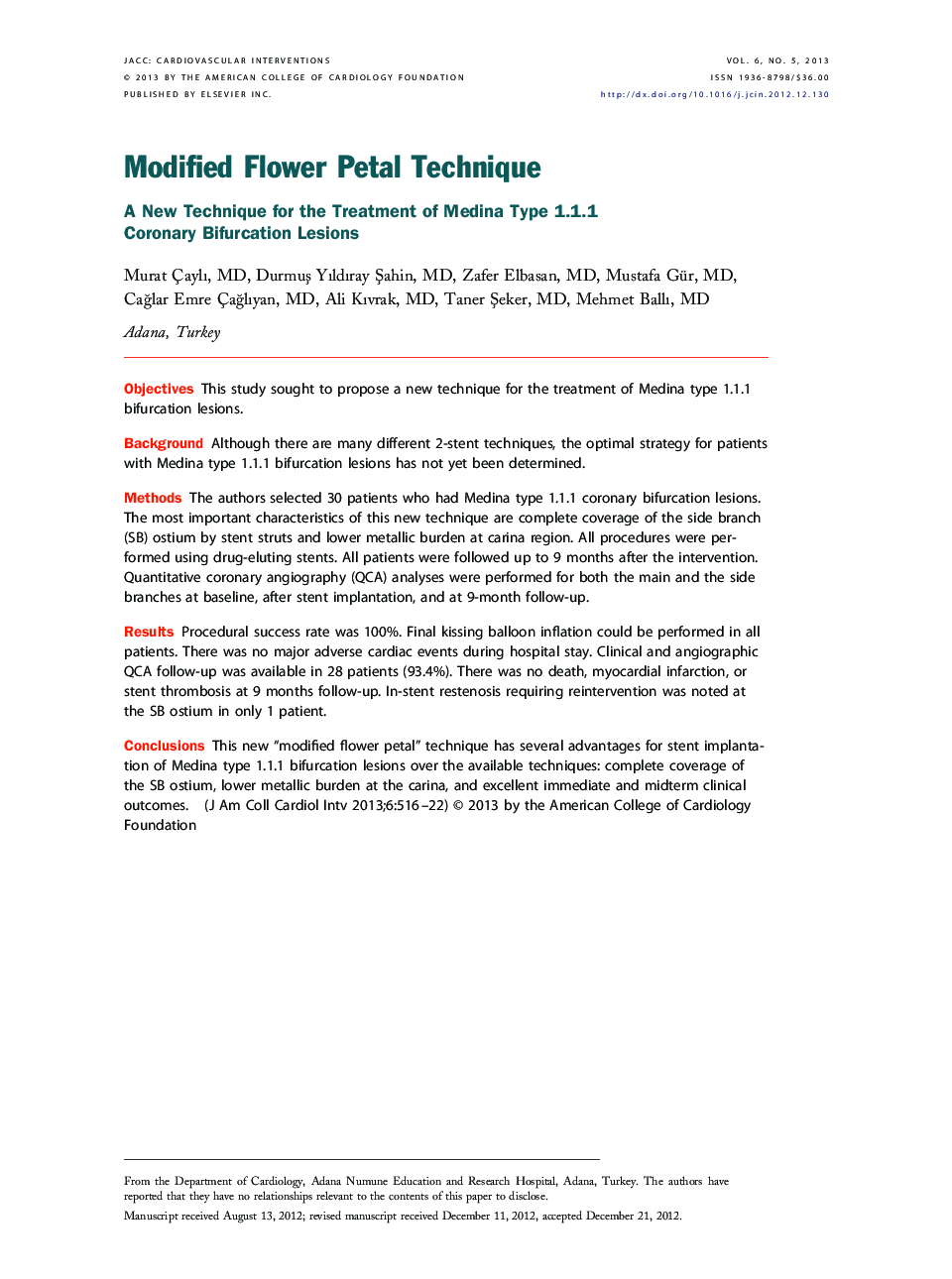| Article ID | Journal | Published Year | Pages | File Type |
|---|---|---|---|---|
| 2941260 | JACC: Cardiovascular Interventions | 2013 | 7 Pages |
ObjectivesThis study sought to propose a new technique for the treatment of Medina type 1.1.1 bifurcation lesions.BackgroundAlthough there are many different 2-stent techniques, the optimal strategy for patients with Medina type 1.1.1 bifurcation lesions has not yet been determined.MethodsThe authors selected 30 patients who had Medina type 1.1.1 coronary bifurcation lesions. The most important characteristics of this new technique are complete coverage of the side branch (SB) ostium by stent struts and lower metallic burden at carina region. All procedures were performed using drug-eluting stents. All patients were followed up to 9 months after the intervention. Quantitative coronary angiography (QCA) analyses were performed for both the main and the side branches at baseline, after stent implantation, and at 9-month follow-up.ResultsProcedural success rate was 100%. Final kissing balloon inflation could be performed in all patients. There was no major adverse cardiac events during hospital stay. Clinical and angiographic QCA follow-up was available in 28 patients (93.4%). There was no death, myocardial infarction, or stent thrombosis at 9 months follow-up. In-stent restenosis requiring reintervention was noted at the SB ostium in only 1 patient.ConclusionsThis new “modified flower petal” technique has several advantages for stent implantation of Medina type 1.1.1 bifurcation lesions over the available techniques: complete coverage of the SB ostium, lower metallic burden at the carina, and excellent immediate and midterm clinical outcomes.
